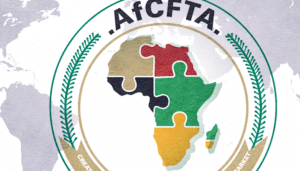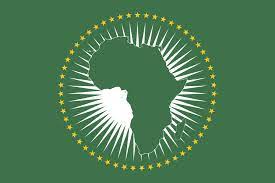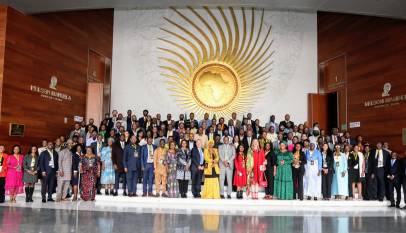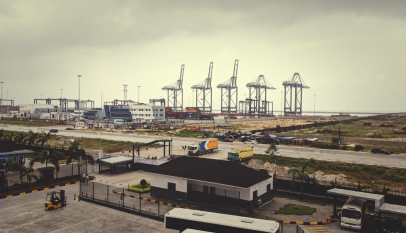OP-ED | AfCFTA: An opportunity to boost youth impact in Africa, By Abideen Olasupo
The AfCFTA is a huge opportunity to accelerate intra-African trade and boost Africa’s trading position in the global market, while African youths can leverage the expanded market created by the AfCFTA to deliver innovative services in fintech, e-learning, digital health, and e-commerce.

In celebration of the 60th anniversary of the Organization of African Unity (OAU), the African Institute for Economic Development and Planning (AIEDP) and the Africa Group of Ambassadors accredited to Dakar, Senegal, on May 24, hosted a high-level roundtable on the status, challenges and prospects of the African Continental Free Trade Area (AfCFTA) and the Single African Air Transport Market (SAATM). The high-level roundtable called for the speedy implementation of the AfCFTA and SAATM.
They also urged Member States to show more commitment towards removing barriers to the implementation of both flagship projects of Agenda 2063. The AfCFTA is potentially the world’s largest free trade area, bringing together the 55 countries of the African Union (AU) and eight Regional Economic Communities (RECs). The Free Trade Area (FTA) is set to create a single continental market of 1.3 billion people with a combined GDP of approximately US$ 3.4 trillion.
It is particularly surprising that Nigerian youths are still largely unaware of the opportunities offered by the AfCFTA while many African countries are taking steps to benefit from the FTA. Beyond the huge opportunity to accelerate intra-African trade and boost Africa’s trading position in the global market, the AfCFTA has the prospect of strengthening Africa’s common voice in global trade negotiations. Yet, it seems the lack of awareness or inadequate information dissemination about the AfCFTA is not doing justice to its cause.
The current interlinkages between African economies are too weak to spur significant economic growth. Therefore, Africa needs to strengthen its regional value chains so as to create linkages and synergies among different sectors across different countries. There is no denying that, with integrated value chains, the region can also promote green business and circular economy practices that minimize environmental impacts and optimize resource use.
Moreover, leveraging modern technologies will go a long way in enhancing our competitiveness in the areas of trade and industrialization, thereby fast-tracking the development of the region. Beyond these benefits, African youths can leverage the expanded market created by the AfCFTA to deliver innovative services in the areas of fintech, e-learning, digital health, tourism, entertainment, and e-commerce.
This calls for the need to improve access to information about the AfCFTA as well as market conditions, trade regulations, standards, procedures, and opportunities in different value chains across the 55 Member States of the AU. Countries like Nigeria need to address this paucity of information and awareness which may hinder the optimal utilization of the FTA’s boundless opportunities by young people.
No doubt, Nigerian youths are among Africa’s most enterprising and innovative, yet their lack of knowledge and skills to compete in regional and global trade may prevent them from benefiting from the landmark trade agreement. This also calls for addressing other barriers, such as a lack of education, skills and job mismatches, which could further hamper Nigerian youth’s employability and productivity under the AfCFTA.
Beyond creating a free trade zone, for African youth to freely navigate the continent, there has to be sufficient investment in infrastructure development and business financing opportunities, which remains an Achilles heel for millions of young people with innovative business ideas yet without the requisite resources to bring them to life. Unless addressed, the limited role of young people in trade policy-making and implementation at national and regional levels may also limit their participation in the process.
Therefore, as the AfCFTA project gathers momentum, governments at the national and subnational levels must intentionally create conducive policies and regulations for youth participation in intra-African trade. Also, since virtually all sectors are set to benefit from the AfCFTA, there is a need to galvanize key stakeholders across every sector to ensure proper coordination for youth to optimally benefit from the FTA. This includes the private sector, which is well-positioned to prepare them for regional and global trade.
In a nutshell, lifting trade barriers and harmonizing policies and regulations will bring about uniformity in Africa’s trade governance architecture. Moreover, Civil Society Organisations (CSOs) can leverage their platforms to raise awareness and advocate for Member States to commit to the AfCFTA, thereby promoting the rights and interests of the region’s growing youth population.
This means countries must establish all necessary mechanisms to benefit from the opportunities offered by trade liberalization through economic diversification, regional value chain development and agricultural development. Ultimately, all hands must be on deck to utilize the AfCFTA as a vehicle for building a strong foundation for sustainable and inclusive socio-economic development, gender equity, and structural transformation in African countries, including Nigeria.
Olasupo Abideen is a Nigerian youth activist. The views expressed in this opinion article are those of the author and do not necessarily reflect African Newspage’s editorial policy.













